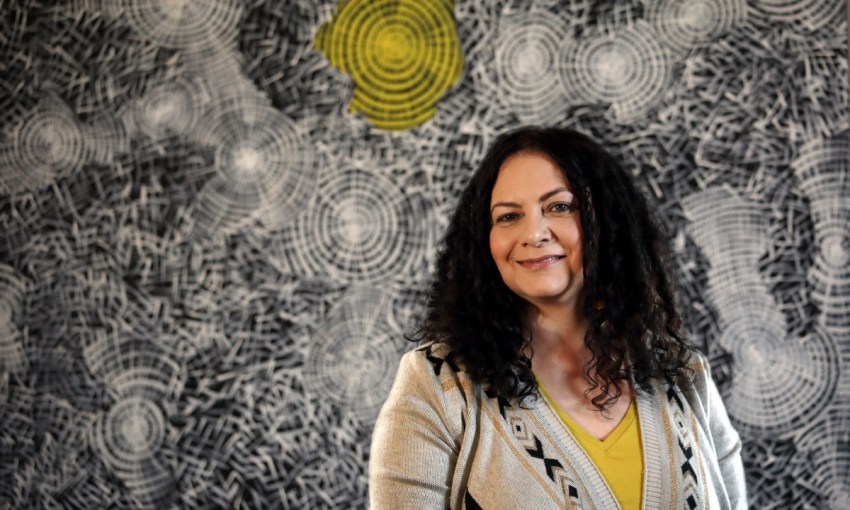Music and arts publicist Deb Edwards has worked with big names such as Cold Chisel, Cliff Richard and Tina Turner. She has always drawn inspiration from her late mother, Amy, who was SA’s first Aboriginal primary school teacher, and her trailblazing aunt, Dr Lowitja O’Donoghue. (Aboriginal and Torres Strait Islander readers are warned this story contains images of deceased persons.)
“They showed me that anything and everything is possible, including forgiveness”
Where did you grow up?
I am a Yankunytjatjara woman, born and raised in Adelaide on Kaurna land to my Aboriginal mother Amy and Hungarian father Matyas.
We lived in Walkerville and then moved to Nailsworth when I was a toddler. My father was a widower when he met my mum. He had three young children under the age of six, then married mum, later adding myself and a younger brother to the family.
Dad immigrated to Australia after World War II and the Hungarian Revolution of 1956. He became an important figure to other Hungarian families who wanted to migrate to Australia, such as the Milisits family, including iconic South Australian pie maker Vili Milisits and his siblings.
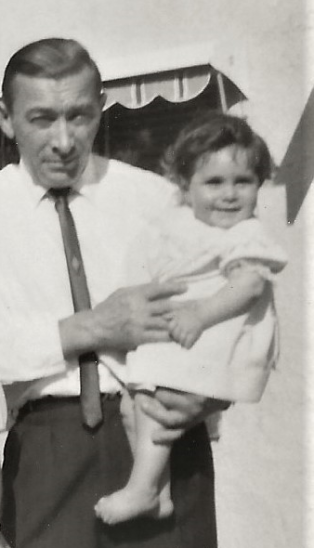
Tell us about your parents.
My mum was a member of the Aboriginal Stolen Generation and grew up in a church mission home (Colebrook Children’s Home) at Quorn in the Flinders Ranges. She was removed from her mother at the age of four along with her four siblings, and she remained there until she was a teenager. Dad was a butcher and a cook and Mum was a teacher, also caring for five children. I went to North Adelaide Primary School where mum was the reception teacher.
We spent a lot of time on weekends with the Hungarian community, either at the Hungarian Club in Norwood, at soccer matches or at the Hungarian Cafe in the city where Dad worked as a cook. Mum and Dad met at this cafe in 1965. On long weekends and school holidays, we all headed bush to Quorn to connect with Mum’s side of the family. I went to Adelaide High School. We weren’t zoned for it so I studied two languages (German and Mandarin Chinese) to gain entry as a special language student.
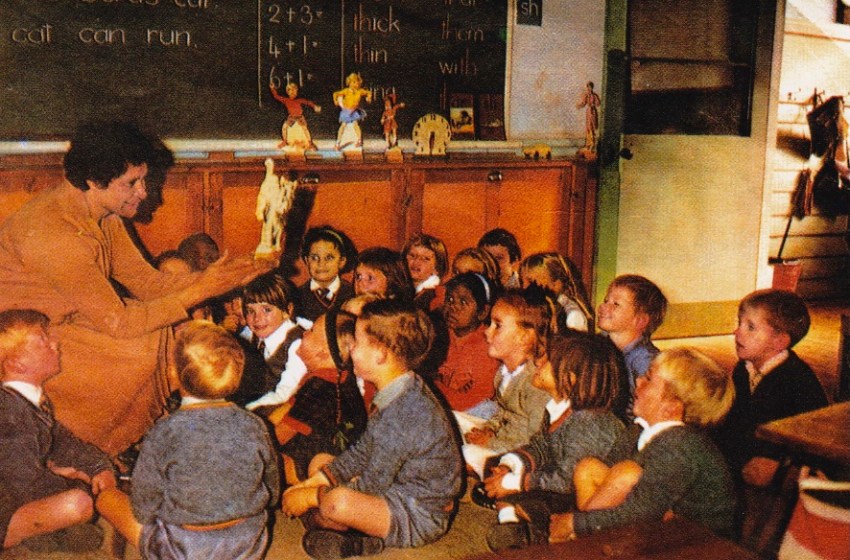
Is there a childhood moment that is particularly memorable?
We moved easily between the two very different styles of a traditional European community to the Aboriginal community. That meant I could be helping Dad make schnitzels at the cafe one day, to running barefoot in the dirt and through dry creek beds the next. At Quorn, we rode the Pichi Richi Railway, drank from the cool canvas water bag at the station, spent long days swimming in the town pool and climbed to the top of Devils Peak.
How was teenage life?
Teenage life had its ups and downs. I was subjected to a lot of racism in high school and I eventually dropped out. Adelaide High was a very multi-cultural school (still is) and I was very tight with a group of Greek girls whom I had a lot of fun with. Despite that, I was targeted by boys who made my Aboriginality and, in particular, my mother, the subject of their racist behaviour. It was very brutal. I had obscene derogatory notes left in my locker on many occasions.
I asked my mum if I could leave school and still to this day I can’t believe she said yes. There are times when I have a brief moment of shame about being a high school dropout, but I don’t actually regret it for a minute. I had been an A grade English and languages student but racism broke me down and I could not continue on. Many years later as an adult, I came to realise that if I had an inner child wound that I hadn’t yet healed, it was those experiences at high school. It has also left me with an issue around feeling that I am not competent at study.
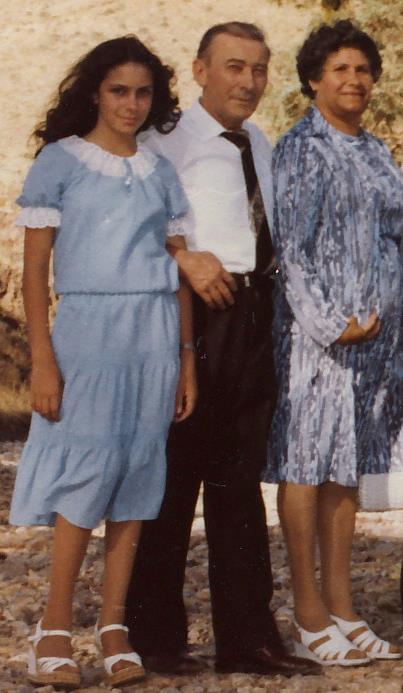
Tell us about the journey of your mum’s teaching career.
My mother Amy Levai (nee O’Donoghue) was the first Aboriginal person permitted to train as a teacher in South Australia. At the age of 19, Mum applied to study for her Early Childhood certificate for Kindergarten, which she completed in 1950 at the age of 20. In the same year, she applied to the Adelaide Teachers College to study for her primary school certificate, but was rejected. She was told that “we do not have Aboriginal people in teacher training”. Eventually, after seven years of pestering the SA Education Department, Mum was finally accepted into the training program in 1957 and completed her teachers certificate in 1958. Her career as an educator spanned more than 35 years. My mum was calm, graceful, dignified and warm. Everyone who met her saw her that way.
Tell us about your trailblazing auntie?
My auntie is Dr Lowitja O’Donoghue who was the first Aboriginal nurse trained at the Royal Adelaide Hospital. Both she and my mum were absolute trailblazers – women who came from a very traumatic childhood but were determined to make a difference despite their difficult early life. Auntie Lowitja went to work in domestic service at the age of 16 with a family in Victor Harbor and was soon working as a nursing aide at the local hospital. She applied to complete her training at the RAH but, like her sister, was refused the opportunity because she was Aboriginal. Lowitja fought the decision which eventually was overturned. She went on to work at the RAH for 10 years and became a charge sister.
In the 60s, Auntie Lowitja joined the state public service which was the start of a lifelong career fighting against discrimination of Aboriginal people. She was the inaugural Chair of the Aboriginal and Torres Strait Islander Commission (ATSIC) from 1990-1996.
In 1977, Lowitja was the first Australian woman to be awarded an AO, she was named Australian of the Year in 1984, an Australian National Living Treasure in 1998 and also received a CBE, an AC, and a DSG (Dame of the Order of St. Gregory, awarded by Pope John Paul II), as well as several honorary doctorates from universities around Australia. She is the Patron of Reconciliation SA, the Don Dunstan Foundation and The Lowitja Institute (named in her honour).
Lowitja was always a powerhouse leader with a very strong, determined personality. I think I have a little of both my aunty and my mum in me. Being able to move past their traumatic childhood, they showed me that anything and everything is possible, including forgiveness.
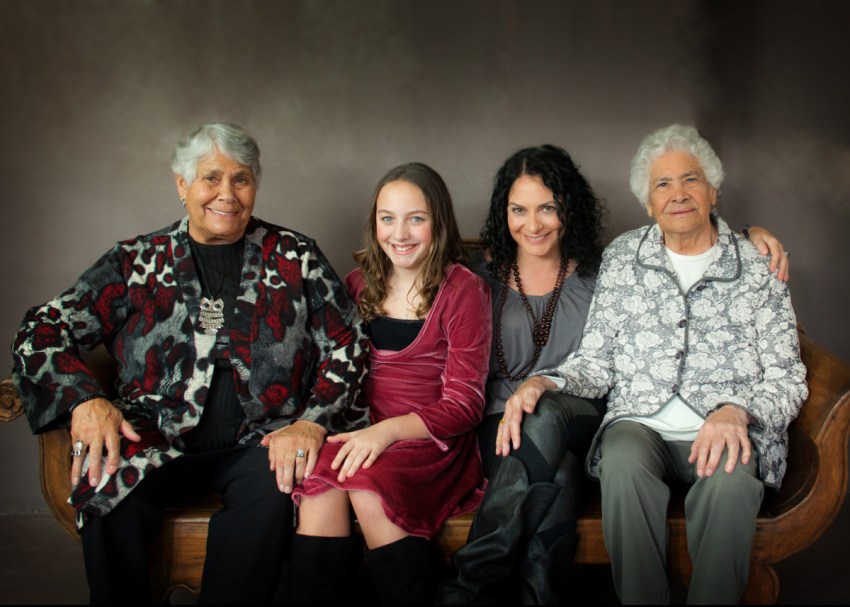
What did you want to be when you grew up?
I didn’t have a clue! I’d always been obsessed with music from a young age. I sat in my room playing LP’s on a little portable record player over and over. When I dropped out of high school I didn’t actually have a plan. Music found me. By this time I considered myself to be the number-one Cold Chisel fan in Australia and when the band announced that they were breaking up, I asked my mum if I could go on the Last Stand tour. The whole tour. She said yes. In the same way that I can’t believe that she let me drop out of high school, I can’t believe she let me “go on tour”. I travelled around by bus mostly.
When the tour started in Canberra, Jimmy Barnes invited our small group of crazy fans who had come from all over the country into the soundcheck and then gave us all AAA passes. The band all ensured that we were looked after and it still remains one of the most incredible times of my life. I turned 17 toward the end of that tour. When I returned, I’d made up my mind that I wanted to be a part of the music industry somehow.
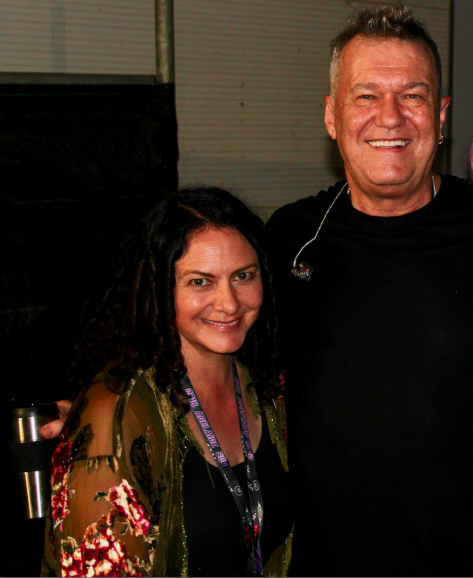
A tour with Jimmy Barnes as a teenager ignited Deb’s love of the music business.
How did your career unfold?
After I left school I was working at a photo finishing lab/retail store. Processing films, selling cameras, etc. I took a lot of photographs of bands during that time and even had a few published on the front cover of a book written by Adelaide radio legend, the late David “Daisy” Day.
I got my first job in the music industry in 1985 as a receptionist at EMI Records on Fullarton Road in Kent Town. I had been persistently writing to record companies asking for a job and this one eventuated through a “foot in the door” via SAFM’s music director at the time, Bill Page. I was three months away from turning 18 when I started. At 20, I was promoted to State Promotions Manager for SA & NT and over a 10-year period, I worked for EMI and also Sony Music in that role here in Adelaide. I moved to Melbourne in 1995 and became the personal assistant and tour coordinator for legendary concert promoter Garry Van Egmond, then a publicist for one of Melbourne’s leading publicity companies, Kerry O’Brien Publicity.
After moving back to Adelaide in 2001, I had a seven-year casual stint as supervisor of Corporate Hospitality at the Adelaide Entertainment Centre at night whilst juggling first-time motherhood during the day. In July of this year, I will celebrate 35 years working in the music industry. I am proud that I am still standing, to be honest – it’s a tough game.
How did you end up doing music publicity?
I had my daughter, Ruby, now 19, and I didn’t want to miss out on all the important times before she started school. So I decided to start my own music PR business.
My first clients were Jon English (one of my teenage heroes) and former Stylus frontman Peter Cupples. The plan was to only do PR within the SA market, however one day on the PR trail with Troy Cassar-Daley led to managing his tour PR in other markets, which then led to a 10-year working relationship. My PR business has now been operating for 12 years and I’m proud that I was able to quickly expand it to working nationally and to also move into the world of performing arts alongside music.
Can you tell us about some of the stars you have worked with?
Troy Cassar-Daley, Tommy Emmanuel, James Reyne, Jon Stevens, Tina Arena, Kate Ceberano, Cold Chisel, Daryl Braithwaite, Black Sorrows, INXS, Ian Moss, Diesel.
Rolling Stones, Cliff Richard, Neil Diamond, Garth Brooks, The Highwaymen, Billy Joel, Beach Boys, AC/DC, Tina Turner, Meatloaf, Lenny Kravitz, Janet Jackson, Billy Joel, Bryan Ferry, Gloria Estefan, Katy Perry, Good Charlotte, Robbie Williams. There are a few.
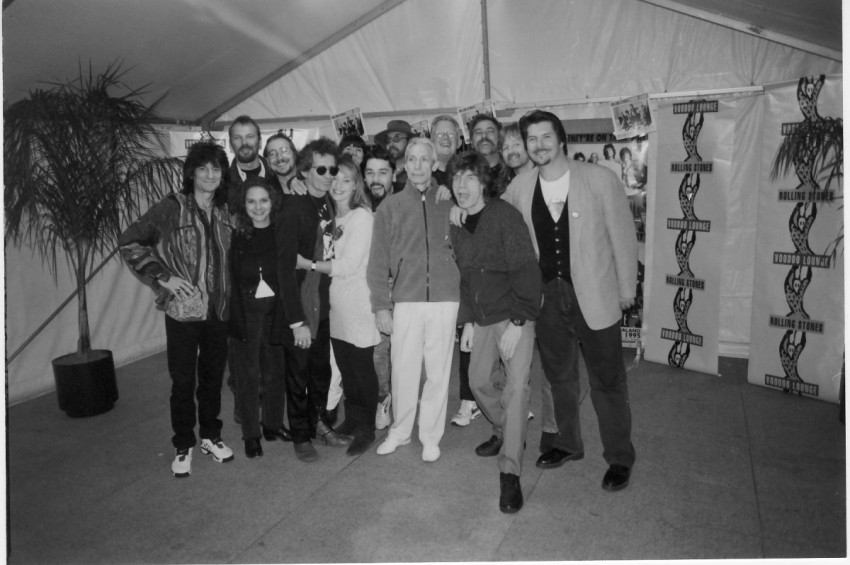
Who are your favourites?
I have enduring friendships with James, Jon and Tommy ever since first working with them. They are all unique humans and I have a lot of time for them as people, not just artists. I’ve worked with Troy Cassar-Daley for 10 years. He is one of a kind; a true gentleman.
Working with and meeting the Rolling Stones was the opportunity of a lifetime. They walk in a room and it’s electrifying.
I worked with Cliff Richard several times and he would have me invite people to attend dinner with him after his shows. We went to a restaurant in Rundle Street, he’d order for everyone and was an amazing dinner host, always generous and kind. Garth Brooks, incredibly welcoming and generous with his time and energy.
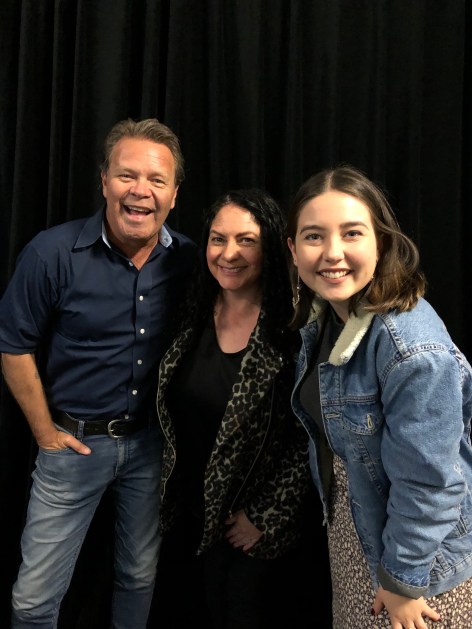
Who was challenging to work with?
Meatloaf, UB40, George Thorogood … plus anyone who was taking drugs, drinking too much, had their head up their bum or who had an overzealous, aggressive manager.
Lovelife? Have you been married and do you believe in “the one”?
I have been married once and we have a beautiful daughter, Ruby. I have been single for 13 years but in that time I have met a couple of gentlemen who hold a special place in my life. Divine timing is exactly that – the planets don’t always align when you want them to.
Since the marriage breakup, I nursed and then lost both of my parents, started a business, was involved in a car accident and put on the single mum hat to the best of my ability. If I’m really honest, there hasn’t been space in my head and heart for a serious love relationship amongst all that. It bothers other people much more that I am single than it does me.
Tell me about becoming a mum and what you love about it?
Ruby is my life’s greatest blessing. I am strongly maternal by nature so I love every single thing about being Ruby’s mum. It was a happy, beautiful new string to my bow. Ruby is a beautiful kind young woman who has just commenced a Bachelor of Arts degree. The same uni that has a plaque honouring her grandmother on a wall in the foyer of the administration office. That’s rather special. She would like a career in the performing arts and we are happy for her to follow her dreams.
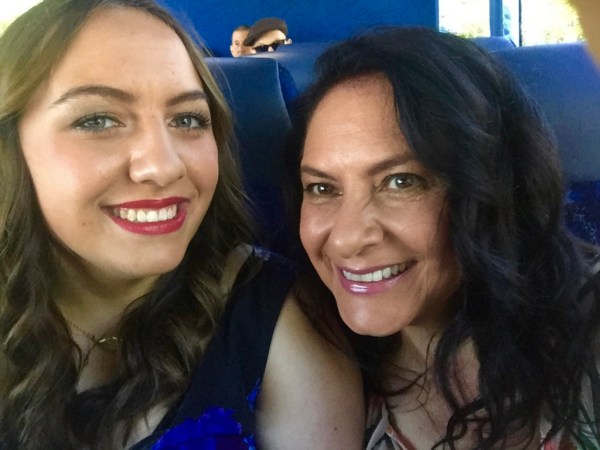
A recent photo with daughter Ruby.
When and how did you lose your mum?
We lost our mum to bowel cancer on Good Friday in 2013 – she was 82 years old. She battled cancer with full grace for about two years. Prior to that she had never had a major illness, nor been hospitalised for any reason apart from childbirth. It was a cruel way to go after having lived such a healthy life. Her oncologist told her that he had never encountered an Indigenous person of her age with such a clear medical history.
I was well prepared for my mum’s passing and I surrounded myself with people who supported me through every aspect of it. I held her hand until her last breath and that experience gave me great strength. My full release of grief and acceptance came about six months later. I went to Uluru for the first time, to do an energy healing course, and I received spiritual healing there from Anangu elders and my ancestors which helped me greatly. I was called by my ancestors to go to Uluru for that reason.
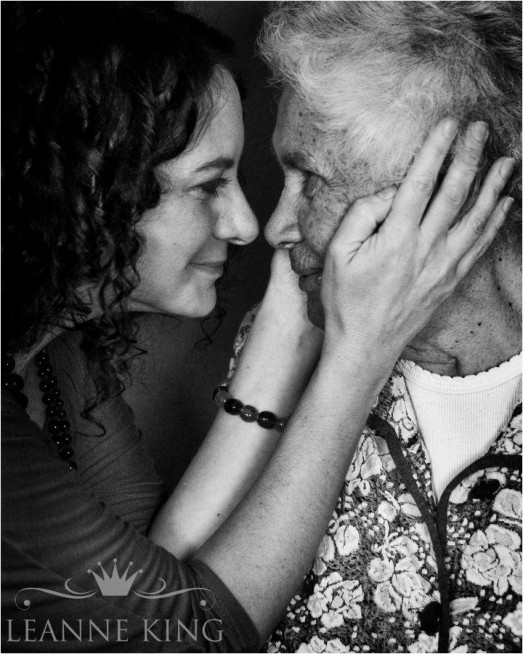
Tell us why your aunt continues to be an inspiration for you.
Auntie Lowitja is still one of the most influential and admired indigenous voices in this country. Although she is long retired from public life, she’s still in demand. She can’t walk down the street without being stopped and we receive letters all the time from people wanting to make contact with her or to pass on their regards and share a story of an interaction with her. Her achievements and work are enduring and an important part of our history. Her biography has just been written and will be published later this year.
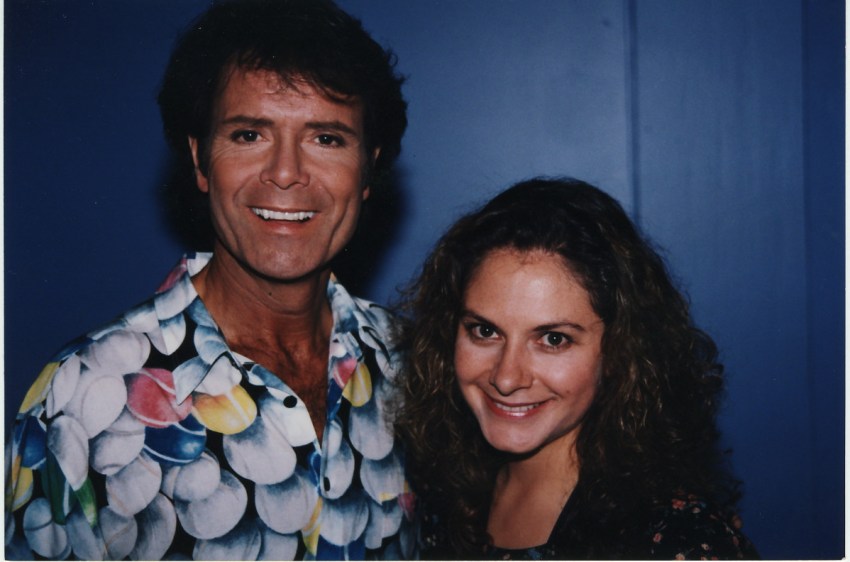
What does your culture mean to you today and how is it part of your life?
My mum’s death was the turning point for my full acceptance of myself as an Aboriginal person. There is no denying that in my youth I struggled with it and wanted to hide who I was so that I wouldn’t be picked on because of the colour of my skin. Sometimes I feel as though I almost didn’t have an identity as an Aboriginal person prior to her death. When she passed, I know that her spirit immediately moved to inside my body and with that came the wisdom and knowledge of our culture that I had never experienced before. I have often felt that I too could be a voice for our people but I had no idea how I could do that.
Recently, I have taken up a position as PR and marketing consultant at Tandanya National Aboriginal Cultural Institute and feel as though I have a lot to offer through both my PR skills and my family history.
What are you looking forward to?
I love this question. I’m looking forward to a time when I will feel free. Free to make decisions for myself that don’t impact on other people.
Free to take all sorts of twists and turns on the journey of life that I have not had the opportunity to take as yet. Once upon a time, my nickname was “the Rock Chick” and I suppose I lived out that persona to a certain degree. I knew anything and everything about music.
It was the box that I was in and it was a good fit. Now at 53, I feel as though I know a lot about how to live without my foot on the brake and I’m really looking forward to putting my foot down instead and letting life show me the way.
My South Australian Life is a first-person series, published each Sunday. Read our previous profiles here.



